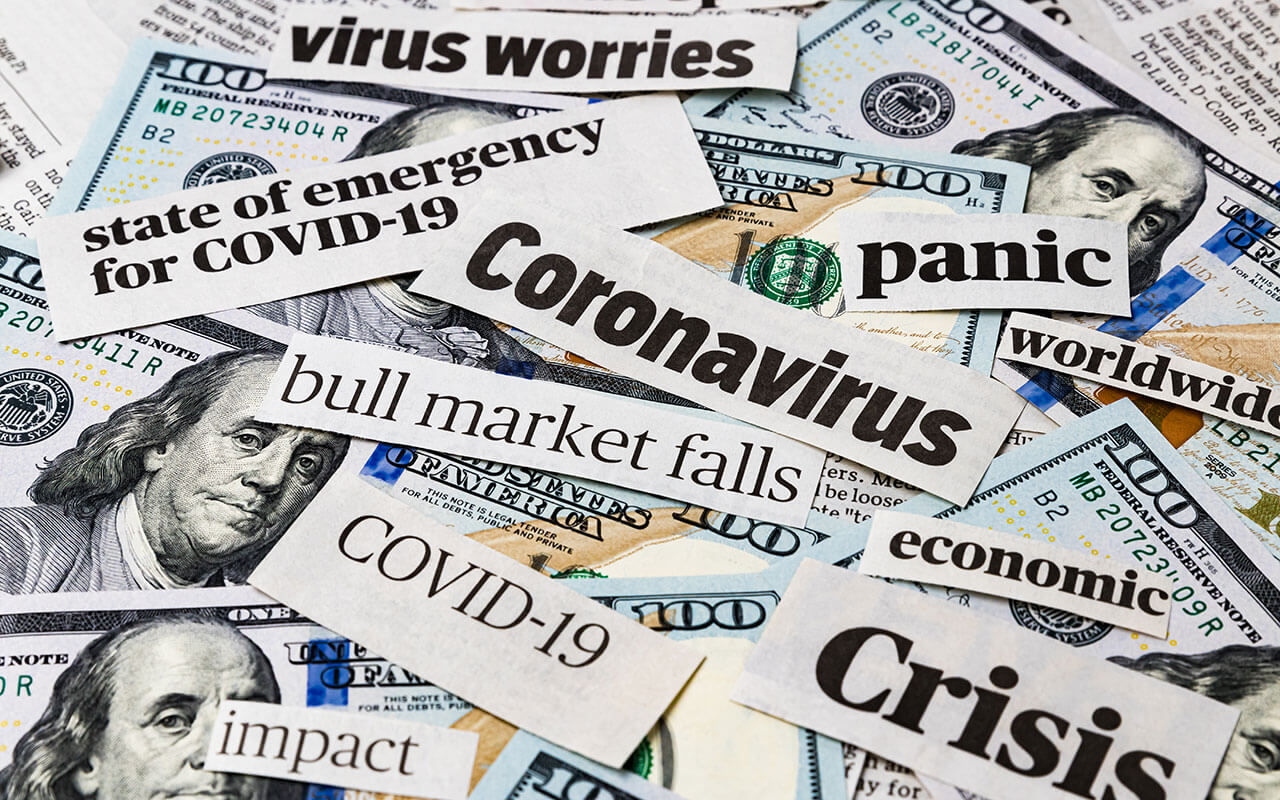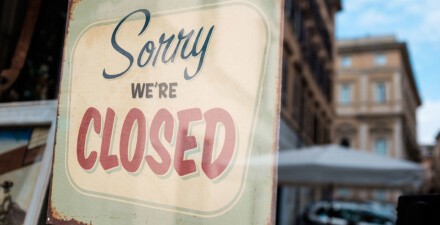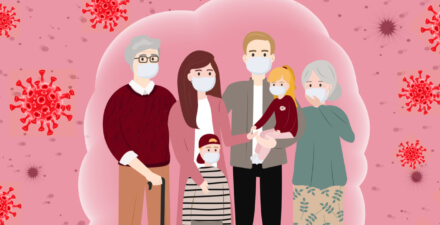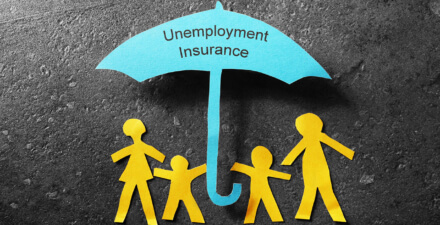The latest research on the public health and economic costs and benefits of containing the coronavirus pandemic

Scientists around the world are scrambling to find and test anti-viral drugs and a new vaccine for COVID-19, the disease behind the coronavirus pandemic now sweeping the planet. Economists and other social scientists are equally busy attempting to unravel the economic and social consequences of the new coronavirus pandemic. These scholars are looking at a range of issues. Several examine the public health and economic costs and benefits, and the overall efficacy of social distancing. Others explore the links between the epidemiology of the disease and its economic consequences. And others are looking at U.S. historical lessons about the economic impact of the 1918 “Spanish flu” and the political impact of other recent public health scares.
We’ve selected 10 recently published working papers to highlight. Two of these studies are real-time analyses of social distancing and mobility in Italy and China, respectively, amid the coronavirus pandemic, looking at the public health dynamics in those two countries. Three of the studies step back into U.S. history to offer lessons about the 1918 flu pandemic on subsequent economic growth and about the reaction of voters to Ebola during the 2014 midterm elections. And the other four working papers model the spread of the coronavirus and its social and economic implications.
Let’s preview each of them in turn, grouping them together in rough subject categories.
Estimating the economic effects of social distancing and quarantining
“Does Social Distancing Matter?” by Michael Greenstone, director of the Becker Friedman Institute for Economics at the University of Chicago, and Vishan Nigam, a predoctoral fellow at the Energy Policy Institute at the University of Chicago
Greenstone and Nigam project that three months to four months of “moderate social distancing” in the United States starting in late March 2020 would save 1.7 million lives by October 1. The two economists then employ the U.S. government’s value of a statistical life to project that “the mortality benefits of social distancing are about $8 trillion or $60,000” per U.S. household; about 90 percent of the “monetized benefits are projected to accrue to people age 50 or older.” Their analysis suggests that moderate social distancing over the next seven months would have substantial medium- and long-term economic benefits.
“What Will Be the Economic Impact of COVID-19 in the US? Rough Estimates of Disease Scenarios,” by economist Andrew Atkeson at the University of California, Los Angeles
Atkeson engages in another modeling exercise to estimate the spread of COVID-19 over the next 12 months to 18 months based on those who are susceptible to the disease, actively infected with the disease, or either recovered or dead and so no longer contagious. How an epidemic plays out over time is determined by the transition rates between these three states. The working paper applies this model to estimate whether “the fraction of active infections in the population exceeds 1 percent (at which point the health system is forecast to be severely challenged) and 10 percent (which may result in severe staffing shortages for key financial and economic infrastructure) as well as the cumulative burden of the disease over an 18-month horizon.” They say their model will allow policymakers to make “quantitative statements regarding the tradeoff between the severity and timing of suppression of the disease through social distancing and the progression of the disease in the population.”
“The Macroeconomics of Epidemics,” by economists Martin S. Eichenbaum at Northwestern University, Sergio Rebelo at Northwestern’s Kellogg School of Management, and Mathias Trabant at the School of Business and Economics at Freie Universität Berlin
In this working paper, Eichenbaum, Rebelo, and Trabant examine “the interaction between economic decisions and epidemics.” They model how “people’s decisions to cut back on consumption and work reduces the severity of the epidemic, as measured by total deaths.” They then explore how these decisions “exacerbate the size of the recession caused by the epidemic.” They conclude that “in our benchmark model, when vaccines and treatments don’t arrive before the epidemic is over and healthcare capacity is limited, optimal containment policy saves roughly half-a-million lives in the United States.”
“Data Gaps and the Policy Response to the Novel Coronavirus,” by economist James H. Stock at Harvard University
Stock employs another epidemiological model of contagion to provide economists with a “framework for understanding the effects of social distancing and containment policies on the evolution of contagion and interactions with the economy.” Stock explores how different policies that yield the same transmission rate can “have the same health outcomes but can have very different economic costs.” His working paper suggests that “one way to frame the economics of shutdown policy” is to find those policies that “trade off the economic cost against the cost of excess lives lost by overwhelming the healthcare system.”
“An SEIR Infectious Disease Model with Testing and Conditional Quarantine,” by economists David W. Berger at Duke University, Kyle Herkenhoff at the University of Minnesota, and Simon Mongey at the University of Chicago—all of whom are Equitable Growth grantees
These three economists employ another infectious disease epidemiology model to understand how “the role of testing and case-dependent quarantine” can “dampen the economic impact of the coronavirus and reduce peak symptomatic infections,” both of which, they say, “are relevant for [understanding] hospital capacity constraints.” Their model starts at “a baseline quarantine-only policy that replicates the rate at which individuals are entering quarantine in the United States in March 2020,” they explain, then posit that their model can be “used to forecast the effects of public health and economic policies” as the coronavirus continues to spread across the nation.
Real-time research on the coronavirus pandemic in China and Italy
“Human Mobility Restrictions and the Spread of the Novel Coronavirus (2019-nCoV) in China,” by Hanming Fang at the Ronald O. Perelman Center for Political Science and Economics, Long Wang at ShanghaiTech University, and Yang Yang at the CUHK Business School at The Chinese University of Hong Kong
In this working paper, these three scholars “quantify the causal impact of human mobility restrictions, particularly the lockdown of the city of Wuhan on January 23, 2020, on the containment and delay of the spread of [COVID-19].” Their working paper seeks “to disentangle the lockdown effect on human mobility reductions from other confounding effects including panic effect, virus effect, and the Spring Festival effect” in Wuhan (referring to the Chinese New Year dates of January 23, to February 2, 2020), finding that “the lockdown of the city of Wuhan on January 23, 2020 contributed significantly to reducing the total infection cases outside of Wuhan.” They also find that “that there were substantial undocumented infection cases in the early days of the [COVID-19] outbreak in Wuhan and other cities of Hubei province, but over time, the gap between the officially reported cases and our estimated ‘actual’ cases narrows significantly.” In addition, they find “evidence that enhanced social distancing policies in the 63 Chinese cities outside [of] Hubei province are effective in reducing the impact of population inflows from the epicenter cities in Hubei province on the spread of [COVID-19] in the destination cities elsewhere.”
“Compliance with COVID-19 Social-Distancing Measures in Italy: The Role of Expectations and Duration,” by Guglielmo Briscese at University of Chicago, Nicola Lacetera at University of Toronto, Maria Macis at Johns Hopkins University’s Carey School of Business, and Mirco Tonin at Free University of Bozen-Bolzano
These four scholars examine something different than the rapid spread of the coronavirus in Italy, focusing instead on how Italians’ “intentions to comply with the self-isolation restrictions introduced in Italy to mitigate the COVID-19 epidemic respond to the length of their possible extension.” Based on survey results, they find that “respondents who are positively surprised by a given hypothetical extension (the extension is shorter than what they expected) are more willing to increase their self-isolation.” But they also find that “negative surprises (extensions longer than expected) are associated with a lower willingness to comply.” They conclude that their findings “provide insights to public authorities on how to announce lockdown measures and manage people’s expectations.”
Historical lessons from past epidemics
“The Coronavirus and the Great Influenza Pandemic: Lessons from the ‘Spanish Flu’ for the Coronavirus’s Potential Effects on Mortality and Economic Activity,” by economists Robert J. Barro at Harvard University, José F. Ursúa at the fund management firm Dodge & Cox, and Joanna Weng at EverBright, a healthy living online platform focused on Asia
These three economists examine the “mortality and economic contraction during the 1918–1920 Great Influenza Pandemic [to] provide plausible upper bounds for outcomes under …COVID-19.” Extrapolating from data for 43 countries, they estimate “flu-related deaths in 1918–1920 of 39 million, 2 percent of world population.” This indicates that “150 million deaths” are possible worldwide amid the current coronavirus pandemic. They find that “annual information on flu deaths [between] 1918–1920 and war deaths during WWI imply flu-generated economic declines for [Gross Domestic Product] and consumption in the typical country of 6 [percent] and 8 percent, respectively.”
“Pandemics Depress the Economy, Public Health Interventions Do Not: Evidence from the 1918 Flu,” by economists Sergio Correia at the Board of Governors of the Federal Reserve System, Steven Luck at the Federal Reserve Bank of New York, and Emil Verner at the Massachusetts Institute of Technology’s Sloan School of Management
These three economists examine the “geographic variation in mortality during the 1918 Flu Pandemic” in the United States to arrive at the finding that “more exposed areas experience a sharp and persistent decline in economic activity.” They estimate that the 1918 pandemic reduced manufacturing output by 18 percent and was driven by both supply- and demand-side shocks to the U.S. economy. They also examined the economic effects of the pandemic across U.S. cities, finding that “cities that intervened earlier and more aggressively do not perform worse and, if anything, grow faster after the pandemic is over.” They conclude that the “economic costs and benefits of nonpharmaceutical interventions … not only lower mortality; they also mitigate the adverse economic consequences of a pandemic.”
“The Virus of Fear: The Political Impact of Ebola in the U.S.,” by economists Filipe R. Campante at Johns Hopkins University’s School of Advanced International Studies, Emilio Depetris-Chauvin at Pontificia Universidad Católica de Chile, and Ruben Durante at Universitat Pompeu Fabra
This study by three economists and political scientists examines “how fear can affect the behavior of voters and politicians by looking at the Ebola scare that hit the United States a month before the 2014 midterm elections.” They say that by “exploiting the timing and location of the four cases diagnosed in the United States, we show that heightened concern about Ebola, as measured by online activity, led to a lower vote share for the Democrats in congressional and gubernatorial elections, as well as lower turnout, despite no evidence of a general anti-incumbent effect (including on President [Barack] Obama’s approval ratings).” They further note that “politicians responded to the Ebola scare by mentioning the disease in connection with immigration and terrorism in newsletters and campaign ads,” a strategic response that “came only from Republicans, especially those facing competitive races, suggesting a strategic use of the issue in conjunction with topics perceived as favorable to them.” Their conclusion about the effects of the Ebola scare in 2014: “Our findings indicate that emotional reactions associated with fear can have a strong electoral impact, that politicians perceive and act strategically in response to this, and that the process is mediated by issues that can be plausibly associated with the specific fear-triggering factor.”






